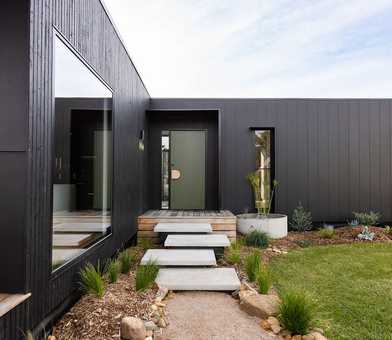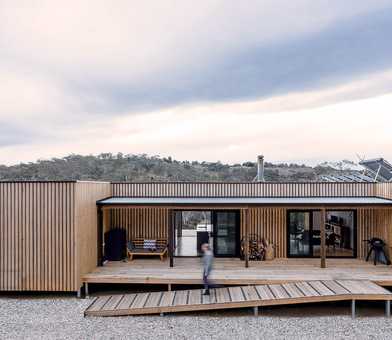Carbon neutral living: ways to reduce your carbon footprint
Living more sustainably, reducing our emissions and striving for carbon neutral living are all things that we should do, but maybe we don’t do enough (or could be doing more) for the sake of our planet.
According to World Bank data, the average Australian has a carbon footprint of about 15 tonnes of CO2 yearly. This is amongst the highest in the world and about three times the global average.
Climate Analytics says Australia is on track to be one of the world’s biggest polluters and could be responsible for up to 17% of global emissions by 2030. Where Australian households are responsible for a fifth of Australia’s greenhouse gas emissions.
The United Nations’ Emissions Gap Report warns that if carbon emissions in wealthy countries aren’t cut to 2-2.5 tonnes of CO2 per person per year by 2030 the Paris Agreement’s long-term goal (of limiting global warming to only 1.5°C) will not be achievable.
The Carbon Footprint Calculator determines an Australian household's carbon footprint using the following six categories:
- power
- transport
- waste
- water
- travel
- food and drink.
With the Australian government’s lack of commitment to a new emissions reduction target for 2030 and being accused of failing to understand the urgency of climate change there is still so much work needed to bring down carbon emissions to the UN’s target. And while big corporations absolutely must step up and play their part in climate protection, there are lots of small changes we can all make in our day-to-day life to reduce our personal carbon footprint. Discover handy tips for working towards net-zero living with ideas to help minimise your carbon footprint and your impact on the environment.
Energy
In an average Australian household, 40% of energy is used for heating and cooling, 25% goes towards heating water, 30% is used by appliances, and 8-15% of the energy consumed is used on lighting according to the Department of Industry, Science, Energy and Resources. Making the smallest changes to how you use energy at home can make a huge difference to your CO2 emissions and your energy bill.
Windows can be the source of around 40–60% of heat loss from a house, appropriate window treatments, double glazing and passive solar design can considerably improve a home's energy efficiency, reduce the need for excessive heating and cooling and cut energy costs.
Did you know that passive solar design can considerably improve energy efficiency and the associated carbon emissions in the home?
Tips to reduce your carbon footprint around your home:
- Consider installing solar panels to convert sunlight into electricity. The process produces zero greenhouse gas emissions and long-term will save you money on bills. Plus, using natural resources like solar energy helps to use less energy, reduce carbon emissions and is so good for the environment.
- Take steps to make your home more energy efficient. 40% of a home’s heat loss occurs through windows. By investing in double glazing (standard in EcoGeneration homes) you can reduce winter heat loss by up to 70%. Improved insulation can also help keep the temperature of your home stable and reduce the need for excessive heating and cooling.
- Switch to energy efficient LED bulbs – they use 80% less electricity and last 5 to 10 times longer than a halogen bulb.
- Upgrade to new and more energy efficient household appliances – A 15-year-old fridge releases about 400 kg of CO2 yearly.
- Turn off your water heater and fridge when you go on holiday, and take other appliances off standby mode when you’re not using them.
- Adjust the thermostat on your hot water system (60°C for storage water heaters and 50°C for continuous flow systems is sufficient) to avoid unnecessary energy use.
- Wash clothes in cold water and air-dry rather than using the dryer.
- Adjust the temperature on your heater (lower) or air conditioner (higher) by just one degree to cut your energy use by about 10%. Or opt for a home which uses passive heat to naturally control internal temperatures.
Did you know? A 3 bedroom 2 bathroom Ecoliv EcoGeneration home that includes a 5.55kw grid connected solar power system saves you about $1,012 annually by not having to pay mains power electricity bills in comparison to an equivalent home without solar power.
Transport and travel
Transport is Australia's third-largest source of greenhouse gas emissions, making up 17% of total emissions or 96 MtCO2e per year. We know that cars are responsible for roughly half of these transport emissions.
Household emissions can be reduced by switching to an electric vehicle adding an electric car charging station at home – like this one from Smappee. Image credit: Smappee.
Tips to reduce your carbon footprint:
- If you need to replace your car consider an electric vehicle (EV) you can charge with renewable energy. The government has a number of different EV subsidies depending on where you live in Australia.
- Carpool with work colleagues if possible.
- Keep up regular car services, remove unnecessary weight from the car and regularly check your tyres to keep your vehicle running at its most efficient.
- Opt to walk, ride or use public transport for your commute to work, school and the shops instead of driving wherever possible.
- Negotiate with your employer to see if you can work from home more often to cut down on your carbon emissions created by driving. For example, if your commute was 10 km one way, five days a week and you switch to working from home, you'd save 1,344 kg of CO2 per year.
- Avoid flying unless absolutely necessary – Australians are some of the biggest travellers in the world, coming in fifth for the highest per capita emissions from domestic and international flights, with each person emitting 878 kg of CO2 per year from flying (about eight times the global average!). If you do need to fly somewhere, make a conscious effort to choose airlines that offset their carbon emissions.
Did you know? Ecoliv homes can be fitted with solar compatible electric car charging stations from Smappee allowing you to charge your electric car quickly and reliably at home.
Working from home can drastically reduce your individual and household carbon footprint – even just a few days a week makes a difference.
Waste
Australian households throw out 2.5 million tonnes of edible food each year (about 312 kg per person which is equivalent to $2000-$2500 worth of groceries). Food waste accounts for approximately 3% of Australia’s annual greenhouse gas emissions. Meanwhile, the Australian construction industry produces about 27 million tonnes of waste every year or 44% of all waste.
Central to the construction process behind every Ecoliv home is waste reduction. Our prefabrication of frames and trusses reduces wastage by up to 52% and we maximise the use of 900mm building materials to significantly reduce waste.
Also on the blog: Sustainable travel trends for 2022
Tips to reduce your carbon footprint:
- Keep your pantry and fridge organised, and make a shopping list before heading to the supermarket to only buy the food you need.
- Plan out your meals and use leftovers the next day rather than buying more food or ordering takeaway.
- Freeze excess ingredients and leftovers to use at a later date.
- Go plastic-free by reducing and refusing use of single-use plastics.
- Compost food and garden waste yourself, to reduce emissions of methane from landfill.
- When renovating a home reuse or donate materials in good condition rather than sending to landfill.
- When building a new home look to employ a builder that has processes in place to reduce construction waste and recycle leftover materials.
Did you know? The Ecoliv team can recommend a number of discrete compost bins and systems, such as A & A Worm Farm Septic Systems and Worm Lovers to factor into your eco home design.
Water
Australian households on average consume 340 litres of water per person, per day. And we know a significant amount of energy is used to treat, supply and use water in the home.
Tips to reduce your carbon footprint:
- Harvest rainwater for watering the garden, cleaning purposes and flushing toilets.
- Install water-efficient WELS rated showerheads and fixtures – less water use means less water heating. In fact, shortening your daily shower from eight minutes to four minutes can save up to 350 kg of CO2 a year.
- Invest in an energy efficient heat pump hot water system.
- Scrape dishes rather than pre-rinsing. And only run your dishwasher and washing machine when full.
- Irrigate the garden early in the morning or late in the evening and mulch garden beds to reduce evaporation.
Did you know? Every Ecoliv EcoGeneration and EcoLiving home comes with a 10,000 litre water tank connected to your dishwasher, washing machine and toilet, which equates to a saving of $818 annually off your water bill.
Food
The greenhouse gas methane is 80 times more effective at heating the earth than carbon dioxide. We know that cattle, sheep and goats contribute 30% of the methane released into the earth’s atmosphere every day as they digest their feed (more than any other single methane source). Also, meat and dairy products both require a lot of water, energy and land to produce.
Tips to reduce your carbon footprint:
- Eat less meat and animal products, try Meat Free Mondays or change to a completely plant-based diet.
- Buy local produce and shop locally to cut down your food miles. Food shipped from overseas has a much higher carbon footprint.
- Try your hand at growing your own food. Check out Biofilta's amazing urban food growing systems.
Did you know? Ecoliv homes are constructed from plantation timber – the most renewable and sustainable materialon the planet. Timber is made from carbon drawn from the atmosphere which would otherwise add to the Greenhouse effect and global warming.
Ready to reduce your carbon footprint at home?
We hope these ideas have inspired you to make some changes that’ll reduce your carbon footprint and slow the rate of global warming one individual at a time.
Want to learn more? If you’d like to explore how an eco modular home or an Ecoliv custom home build could allow you to achieve operationally carbon neutral living, get in touch with the Ecoliv team today.











